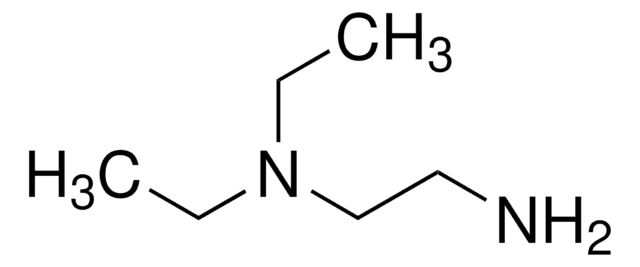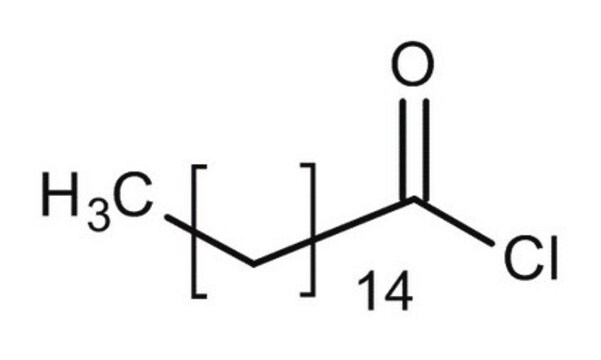156930
Lauroyl chloride
98%
Sinónimos:
Dodecanoyl chloride
About This Item
Productos recomendados
Nivel de calidad
Análisis
98%
formulario
liquid
índice de refracción
n20/D 1.445 (lit.)
bp
134-137 °C/11 mmHg (lit.)
solubilidad
methanol: soluble 100 mg/mL, clear
densidad
0.946 g/mL at 25 °C (lit.)
cadena SMILES
CCCCCCCCCCCC(Cl)=O
InChI
1S/C12H23ClO/c1-2-3-4-5-6-7-8-9-10-11-12(13)14/h2-11H2,1H3
Clave InChI
NQGIJDNPUZEBRU-UHFFFAOYSA-N
Aplicación
- as tailoring agent for chemical modification of nanocelluloses of different length, nanofibrillated cellulose and cellulose nanocrystals
- in the preparation of acylated collagen with water solubility and better surface activity
- as organic low-friction boundary lubricant in the preparation of novel polyvinyl alcohol hydrogel
- in the synthesis of hemicellulose-based hydrophobic biomaterials
Palabra de señalización
Danger
Frases de peligro
Consejos de prudencia
Clasificaciones de peligro
Skin Corr. 1B
Código de clase de almacenamiento
8A - Combustible corrosive hazardous materials
Clase de riesgo para el agua (WGK)
WGK 3
Punto de inflamabilidad (°F)
284.0 °F - closed cup
Punto de inflamabilidad (°C)
140 °C - closed cup
Equipo de protección personal
Faceshields, Gloves, Goggles, type ABEK (EN14387) respirator filter
Elija entre una de las versiones más recientes:
¿Ya tiene este producto?
Encuentre la documentación para los productos que ha comprado recientemente en la Biblioteca de documentos.
Los clientes también vieron
Nuestro equipo de científicos tiene experiencia en todas las áreas de investigación: Ciencias de la vida, Ciencia de los materiales, Síntesis química, Cromatografía, Analítica y muchas otras.
Póngase en contacto con el Servicio técnico











